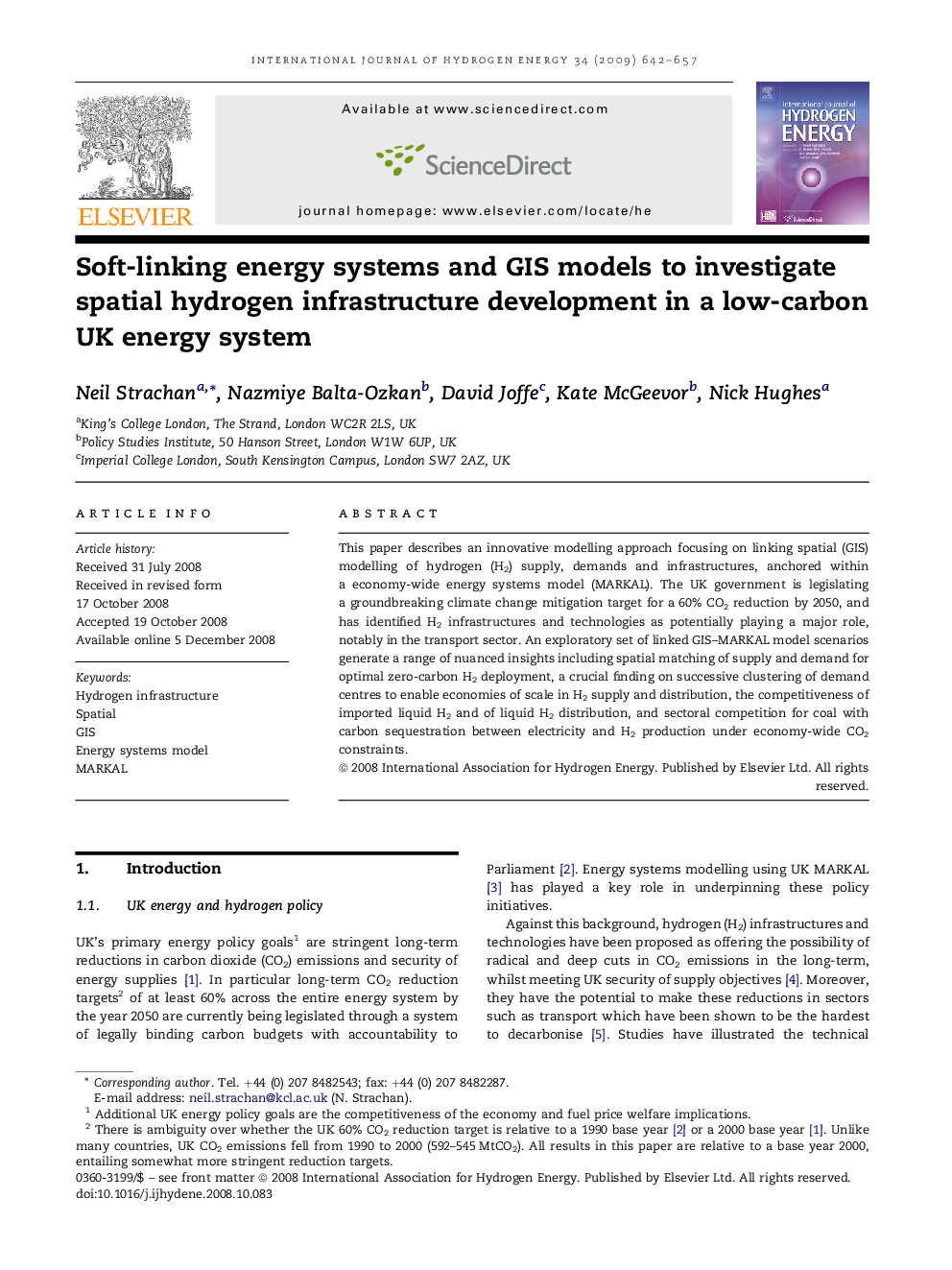| Article ID | Journal | Published Year | Pages | File Type |
|---|---|---|---|---|
| 1283444 | International Journal of Hydrogen Energy | 2009 | 16 Pages |
This paper describes an innovative modelling approach focusing on linking spatial (GIS) modelling of hydrogen (H2) supply, demands and infrastructures, anchored within a economy-wide energy systems model (MARKAL). The UK government is legislating a groundbreaking climate change mitigation target for a 60% CO2 reduction by 2050, and has identified H2 infrastructures and technologies as potentially playing a major role, notably in the transport sector. An exploratory set of linked GIS–MARKAL model scenarios generate a range of nuanced insights including spatial matching of supply and demand for optimal zero-carbon H2 deployment, a crucial finding on successive clustering of demand centres to enable economies of scale in H2 supply and distribution, the competitiveness of imported liquid H2 and of liquid H2 distribution, and sectoral competition for coal with carbon sequestration between electricity and H2 production under economy-wide CO2 constraints.
